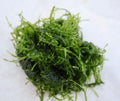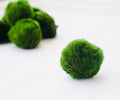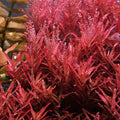The Growth Conditions and Nutrient Uptake of Duckweed
Growth Conditions
Duckweed can grow in a wide range of environmental conditions, but prefers still or slow-moving water with plenty of sunlight. It can grow in both freshwater and brackish water.
Duckweed prefers to grow in still or slow-moving water with plenty of sunlight. It can tolerate a wide range of temperatures and pH levels, but generally prefers water temperatures between 15-30°C (59-86°F) and a pH range of 6.5-7.5.
It can grow in both freshwater and brackish water, but it requires some nutrients to support its growth. While it can absorb nutrients such as nitrogen and phosphorus from water, it also needs trace amounts of other nutrients like potassium, calcium, and magnesium. In a closed aquarium system, these nutrients can be provided through fertilization or by adding aquatic soil or substrate.
It can grow in different levels of lighting, but it generally requires moderate to high levels of light for optimal growth. If the light is too low, the plants may become pale and stunted, while too much light can cause excessive growth and a reduction in plant size.
It grows quickly and can quickly become a nuisance if not managed properly. Regular removal of excess duckweed can help to prevent it from taking over the aquarium or pond. In addition, duckweed can be propagated easily by simply separating the daughter plants from the parent plant, making it easy to maintain in an aquascape.
Overall, duckweed is a versatile and hardy plant that can thrive in a wide range of growth conditions. With proper care and management, it can make a great addition to an aquascape or pond.
Nutrient Uptake
Duckweed is a plant that is known for its ability to absorb nutrients from water. It can absorb excess nitrogen and phosphorus, which are the main nutrients that contribute to harmful algal blooms in aquatic systems. This makes duckweed a useful tool for improving water quality in ponds and aquariums.
In addition to nitrogen and phosphorus, duckweed also requires other nutrients like potassium, calcium, and magnesium to support its growth. In closed aquatic systems like aquariums, these nutrients can be provided through fertilization or by adding aquatic soil or substrate.
Duckweed absorbs nutrients through its leaves, which are covered in tiny root-like structures called rootlets. These rootlets allow the plant to take up nutrients directly from the water column.
One of the benefits of using duckweed in an aquascape is that it can help to reduce the levels of nutrients in the water, which can help to prevent algae growth and promote a healthy aquatic ecosystem. However, it's important to note that duckweed can also create oxygen-poor conditions in the water if it grows too thickly. For this reason, it's important to monitor the growth of duckweed in your aquarium or pond and remove excess plants as needed.
Overall, the nutrient uptake of duckweed makes it a valuable tool for improving water quality in aquatic systems. By absorbing excess nutrients from the water, it can help to promote a healthy and balanced ecosystem.
















